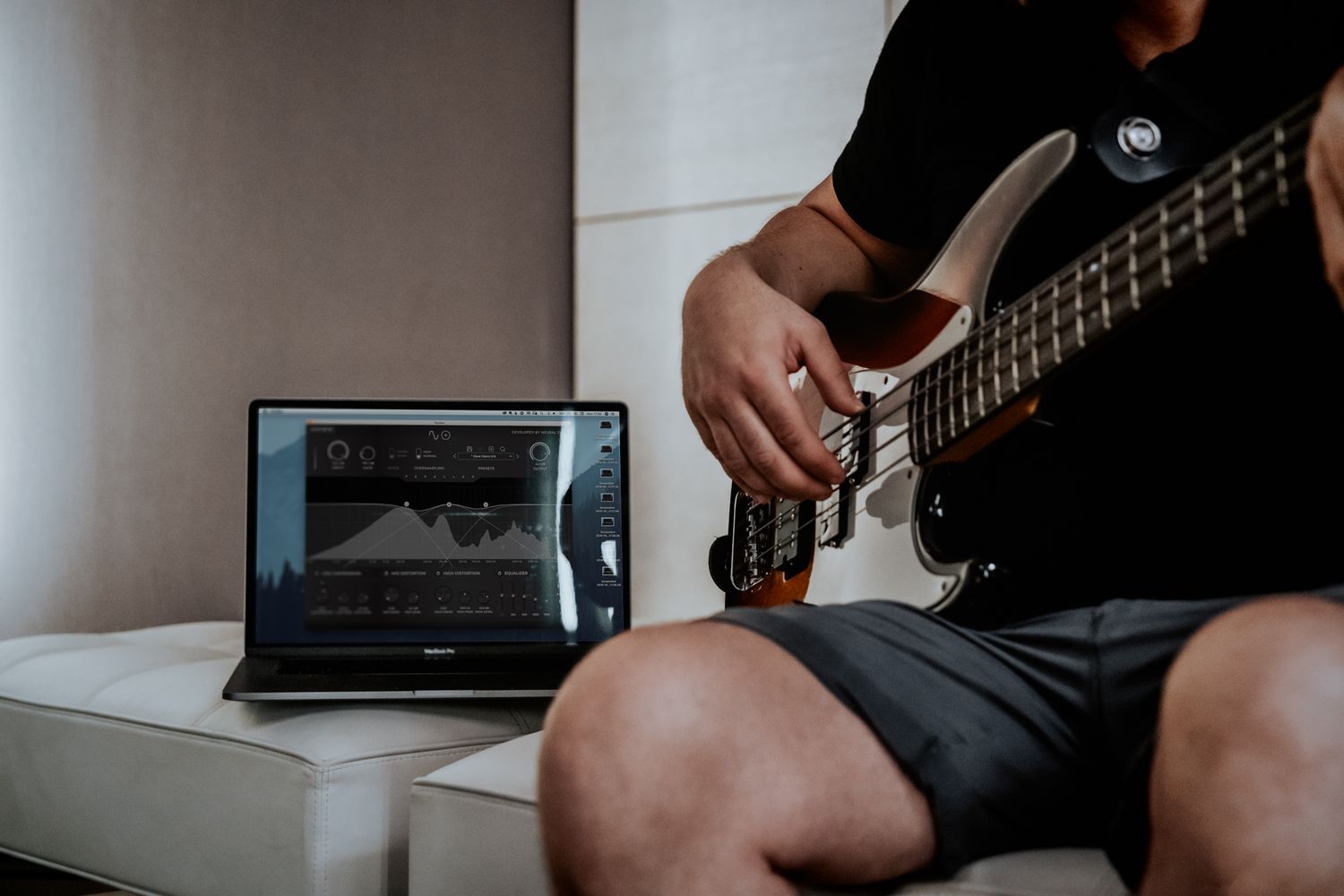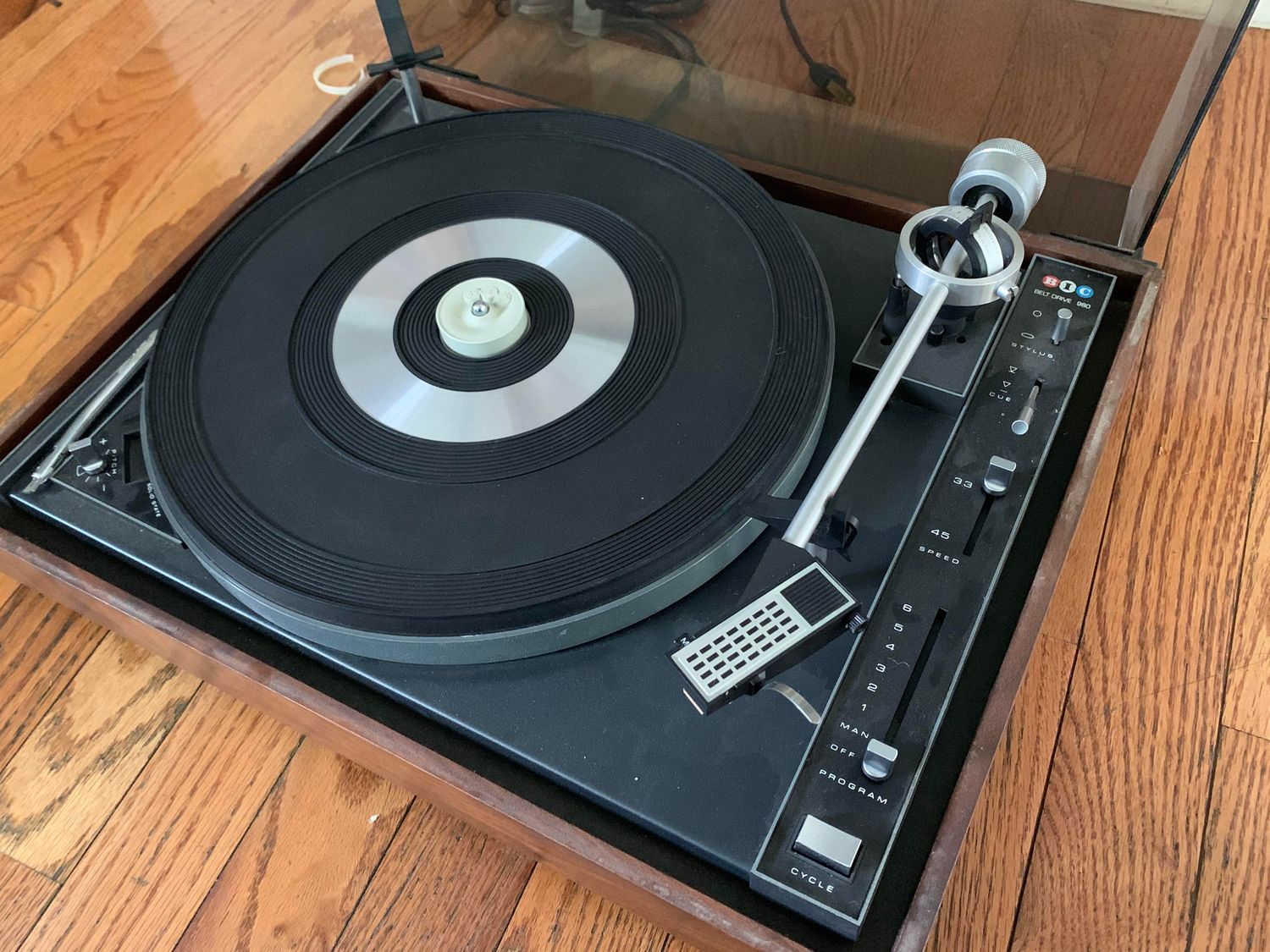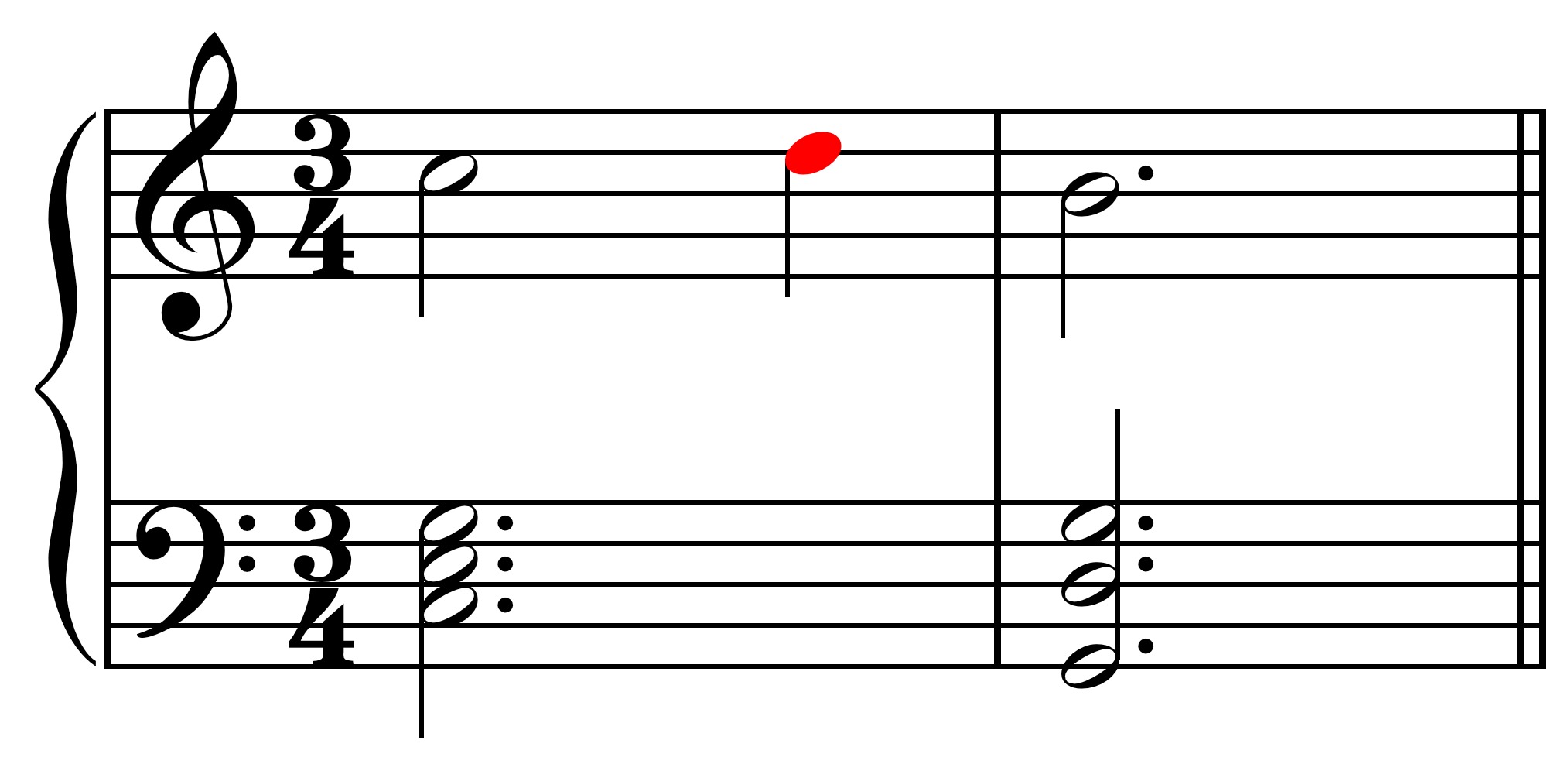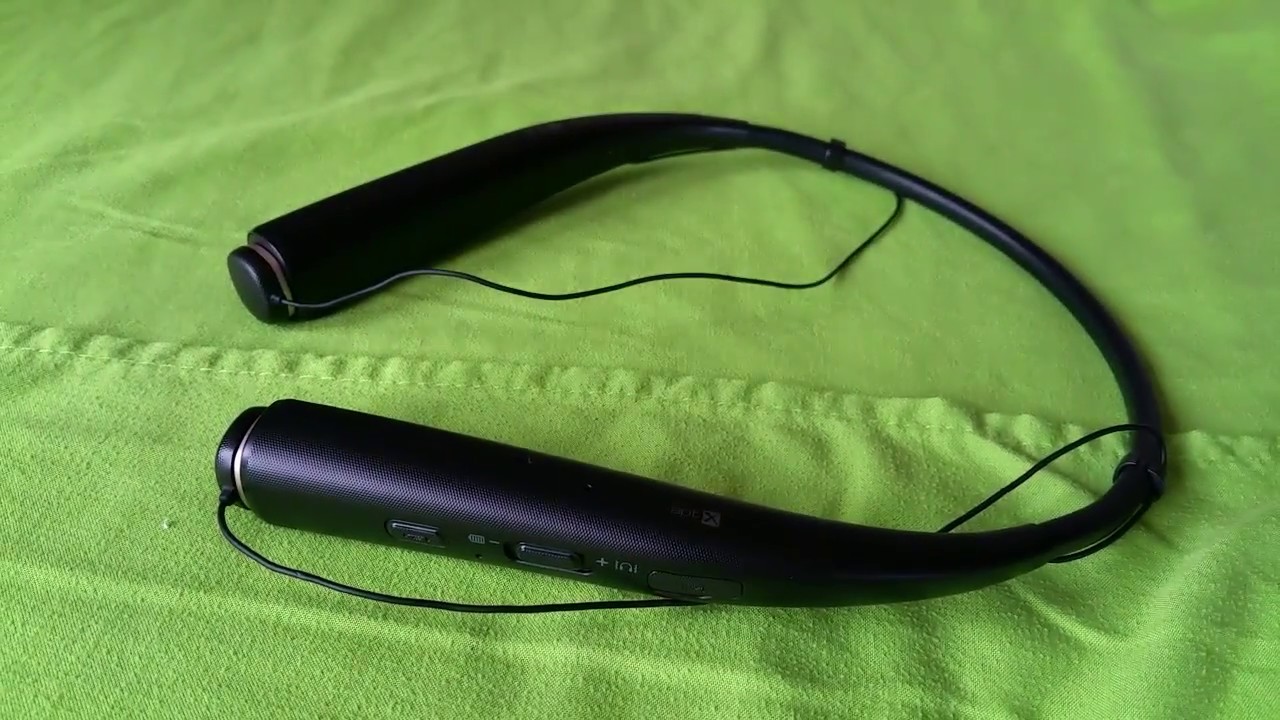Home>Instruments>Bass>How To Get Good Bass Tone


Bass
How To Get Good Bass Tone
Modified: January 22, 2024
Learn how to achieve a killer bass tone with our comprehensive guide. Improve your bass playing skills and make your music sound incredible.
(Many of the links in this article redirect to a specific reviewed product. Your purchase of these products through affiliate links helps to generate commission for AudioLover.com, at no extra cost. Learn more)
Table of Contents
- Introduction
- Understanding Bass Tone
- Choosing the Right Bass Guitar
- Selecting the Appropriate Bass Strings
- Exploring Different Types of Bass Amplifiers
- Adjusting the EQ Settings
- Utilizing Effects Pedals for Bass Tone
- Proper Technique for Achieving a Good Bass Tone
- Maintaining and Caring for Your Bass Guitar
- Conclusion
Introduction
When it comes to creating great music, having a solid bass tone is essential. The bass guitar provides the foundation of the rhythm section, adding depth, groove, and texture to the overall sound. Whether you’re a beginner or an experienced bassist, understanding how to achieve a good bass tone is crucial.
In this article, we’ll dive into the world of bass tone and explore the various factors that contribute to creating a rich and powerful sound. We’ll cover everything from choosing the right bass guitar to selecting the appropriate strings, exploring different types of bass amplifiers, adjusting EQ settings, and utilizing effects pedals. We’ll also discuss the importance of proper technique and maintaining your bass guitar to ensure optimal tone.
Whether you play in a band, record in a studio, or perform live, mastering the art of bass tone will greatly enhance your music and leave a lasting impression on your listeners. So let’s get started and learn how to unlock the potential of your bass guitar!
Understanding Bass Tone
Before diving into the techniques and equipment involved in achieving a good bass tone, it’s important to have a basic understanding of what bass tone actually means. Bass tone refers to the overall sound quality and characteristics produced by the bass guitar. It encompasses factors such as the richness, clarity, depth, and punchiness of the sound.
The primary objective of achieving a good bass tone is to ensure that the bass guitar can be heard clearly in the mix and complements the other instruments in a balanced way. A well-defined bass tone adds power, groove, and dynamics to the music, allowing the bassist to hold down the low-end foundation of the song.
Several elements contribute to the overall bass tone, including the choice of bass guitar, strings, amplifiers, EQ settings, effects pedals, and playing technique. Understanding how these factors interact with each other is essential in shaping your desired sound.
It’s important to note that bass tone is subjective and can vary depending on the music genre, personal preference, and the specific role of the bass in a song. For example, a bass tone suitable for funk music may be different from the tone required for heavy metal.
Keep in mind that experimenting with different techniques and gear is key to finding your unique bass tone. Don’t be afraid to try new things, as what works for one bassist may not work for another. Ultimately, achieving a good bass tone is about finding the right balance that suits your playing style and musical context.
Choosing the Right Bass Guitar
When it comes to achieving a good bass tone, selecting the right bass guitar is of utmost importance. The bass guitar you choose will greatly influence the overall sound and feel of your playing.
There are various factors to consider when choosing a bass guitar:
- Body Style: Bass guitars come in different body styles, such as the traditional Precision bass or the sleek Jazz bass. Each style offers its own unique tonal characteristics. Try different body styles to see which one suits your preferences and the genre of music you play.
- Wood Type: The type of wood used in the construction of a bass guitar affects its tone. Common woods include Alder, Ash, Mahogany, and Maple. Experiment with different wood types to find the one that produces the desired sound.
- Pickups: Pickups play a crucial role in shaping the sound of a bass guitar. Single-coil pickups, such as those found on Jazz basses, offer a brighter and more articulate tone. Humbucker pickups, commonly found on Precision basses, provide a warmer and thicker sound. Consider the sonic characteristics you’re looking for when choosing pickups.
- Scale Length: The scale length of a bass guitar refers to the length between the nut and the bridge. Short-scale basses have a shorter length and are known for their comfortable playability, while long-scale basses offer a tighter and more defined low-end response. Determine which scale length feels and sounds right for you.
- Budget: Lastly, consider your budget. Bass guitars come in a wide range of prices, and while a higher-priced instrument may offer better craftsmanship and components, there are excellent options available in different price ranges. Set a budget and look for a bass guitar that offers good quality within your price range.
Ultimately, the best bass guitar for you is the one that feels comfortable in your hands, produces the desired tone, and suits the music you play. Take the time to try out different bass guitars, preferably in a music store, and see how they feel and sound in your hands. Trust your ears and instincts when choosing a bass guitar, as it will be your most important tool in achieving a great bass tone.
Selecting the Appropriate Bass Strings
When it comes to achieving a good bass tone, the choice of strings can make a significant difference. Bass strings not only affect the feel and playability of the instrument, but they also play a crucial role in shaping the overall sound.
Here are some factors to consider when selecting bass strings:
- Gauge: The gauge of the strings refers to their thickness. Thicker strings usually produce a fuller and deeper tone, while lighter gauge strings offer a brighter sound with less tension. Experiment with different gauge options to find the balance that suits your playing style and desired tone.
- Material: Bass strings are typically made from various materials, including nickel-plated steel, stainless steel, or flatwound/roundwound. Nickel-plated steel strings are the most common and provide a balanced tone with a bright edge. Stainless steel strings offer a brighter and more articulate sound. Flatwound strings have a smooth, mellow tone, while roundwound strings provide more brightness and clarity.
- Coating: Some bass strings come with coatings or treatments to prolong their lifespan and maintain their tone. Coated strings offer increased durability and can maintain their brightness for a longer time. However, they might slightly affect the tone and feel of the strings. Consider whether you prefer the longevity of coated strings or the natural feel of uncoated ones.
- Playing Style and Genre: The style of music you play and your playing technique can also influence the choice of bass strings. For example, if you play aggressive styles like rock or metal and use a lot of slap and pop techniques, you might opt for thicker gauge strings to handle the increased tension and provide a punchier tone. On the other hand, if you play more laid-back styles like jazz or blues, you might prefer lighter gauge or flatwound strings for a smoother and mellower sound.
Choosing the appropriate bass strings is a personal preference and may require some experimentation. Don’t be afraid to try different brands, materials, and gauges to find the strings that complement your playing style and help you achieve the desired bass tone. Remember to regularly clean and maintain your strings to maximize their lifespan and ensure consistent tone quality.
Exploring Different Types of Bass Amplifiers
When it comes to shaping your bass tone, the choice of amplifier is a critical factor. Bass amplifiers are designed specifically to reproduce the low frequencies produced by the bass guitar, providing the necessary power and clarity for your sound to be heard. Understanding the different types of bass amplifiers can help you make an informed decision about which one suits your needs.
Here are a few common types of bass amplifiers:
- Combo Amplifiers: Combo amplifiers, also known as all-in-one amps, combine the amplifier head and speaker into a single unit. They are compact, convenient, and suitable for practice sessions, rehearsals, and small to medium-sized gigs. Combo amps come in various wattages, so consider the size of the venues you typically play in when selecting a combo amp.
- Stack Amplifiers: Stack amplifiers consist of a separate amplifier head and one or more external speaker cabinets. They offer more power and are ideal for larger venues and stage performances. Stack amps allow you more flexibility in terms of speaker configurations and can provide a more commanding presence on stage.
- Tube Amplifiers: Tube amplifiers, also known as valve amplifiers, use vacuum tubes to amplify the sound. They are known for their warm and vintage tone. Tube amps often produce natural, rich harmonics and offer a more dynamic response. However, they tend to be heavier, more expensive, and require more maintenance compared to solid-state amps.
- Solid-State Amplifiers: Solid-state amplifiers use transistor technology to amplify the sound. They are generally more affordable, lightweight, and reliable. Solid-state amps provide a clean and accurate reproduction of your bass tone, making them suitable for a wide range of musical styles.
- Digital Amplifiers: Digital amplifiers use digital processing technology to simulate the sound of various amplifiers and cabinets. They offer versatility, allowing you to access a wide array of tones and effects. Digital amps are often lighter and more compact, making them convenient for playing and recording in different environments.
When choosing a bass amplifier, consider factors such as your playing style, the venues you perform in, your budget, and the desired tone. It’s advisable to try out different amplifiers and speakers to find the combination that best complements your playing style and delivers the tone you’re aiming for. Additionally, consider the power rating of the amplifier to ensure it can handle the volume requirements of your gigs or rehearsals.
Remember, the amplifier acts as the voice of your bass guitar, so selecting the right one is crucial for achieving a compelling and well-rounded bass tone.
Adjusting the EQ Settings
One of the most effective ways to shape your bass tone is by adjusting the EQ settings on your bass amplifier or pedal. The EQ (Equalization) controls allow you to tailor the frequencies of your bass sound, enhancing certain characteristics and minimizing others. Understanding how to use the EQ effectively can help you achieve a well-balanced and defined bass tone.
Here are the common EQ controls found on most bass amplifiers:
- Bass: The bass control adjusts the low frequencies of your bass tone. Increasing the bass control adds more depth and thump to your sound, while reducing it can provide a tighter and less boomy tone.
- Middle: The middle control determines the level of midrange frequencies in your bass sound. Boosting the midrange can add more presence and attack to your sound, while lowering it can create a more scooped and smooth tone.
- Treble: The treble control adjusts the high frequencies in your bass sound. Boosting the treble can add brightness and clarity to your tone, while cutting it can create a darker and smoother sound.
- Pickup Blend: If your bass guitar has multiple pickups, a pickup blend control allows you to adjust the balance between them. Experimenting with different pickup combinations can yield different tonal characteristics.
When adjusting the EQ settings, it’s important to listen carefully and make incremental changes to avoid drastic alterations to your tone. Start by setting all EQ controls to the neutral or flat position and then make subtle adjustments to achieve the desired sound. It’s recommended to make changes in small increments and listen to how each adjustment affects the overall tone.
Consider the musical context and genre you’re playing in when adjusting the EQ settings. For example, in a funk or R&B setting, you may want to emphasize the low-end to create a deep and punchy tone. In a rock or metal context, boosting the midrange can help your bass cut through the mix and provide a more aggressive sound.
Lastly, keep in mind that EQ settings can vary depending on the venue, the other instruments in the band, and personal preference. Take the time to experiment with different EQ settings in various playing situations to find the sweet spot that suits your bass tone and the music you’re playing.
Utilizing Effects Pedals for Bass Tone
Effects pedals are a powerful tool for expanding your sonic palette and adding depth and creativity to your bass tone. They allow you to manipulate and shape your sound in unique ways, taking your bass playing to new heights. Whether you want to add subtle enhancements or create bold and experimental tones, incorporating effects pedals into your setup can greatly enhance your bass tone.
Here are some common types of effects pedals used by bassists:
- Overdrive/Distortion: Overdrive and distortion pedals add grit, saturation, and sustain to your bass tone. They are commonly used in rock, metal, and alternative genres to create a more aggressive and driven sound. Experiment with different overdrive and distortion pedals to find the level of gain and character that fits your style.
- Compressor: A compressor pedal helps even out the dynamics of your bass signal by reducing the difference between the loudest and softest notes you play. It adds sustain and can make your bass sound more balanced and controlled. Compressors are especially useful in genres like funk and pop where a consistent and punchy bass tone is desired.
- Modulation Effects: Modulation effects, such as chorus, flanger, and phaser, add movement and depth to your bass tone. These effects create swirling, sweeping, and swirling sounds that can add a unique character to your playing. Experiment with different modulation effects to find the ones that enhance your bass tone and musical style.
- Delay and Reverb: Delay and reverb pedals add spaciousness and ambience to your bass sound. Delay creates echoes and repeats of your notes, while reverb simulates different acoustic spaces. These effects are commonly used to add depth, texture, and dimension to your bass tone.
- Envelope Filter: An envelope filter, also known as an auto-wah, responds to the dynamics of your playing by sweeping the filter frequencies. It adds a funky, wah-like effect to your bass tone and is often used in funk and disco genres.
When incorporating effects pedals into your bass tone, it’s important to experiment and find the right balance. Avoid overusing effects that may overshadow the natural tone of your instrument. Remember, the goal is to enhance your bass tone, not to mask it. Listen carefully and make adjustments to achieve a cohesive and musical sound.
Additionally, consider the order in which you connect your effects pedals. The sequence can impact how the effects interact with each other. As a general rule, modulation effects like chorus and phaser usually come before time-based effects like delay and reverb in the pedal chain. However, feel free to experiment with different pedal orders and configurations to find your desired sound.
Lastly, always be mindful of the overall mix and how your effects contribute to the band’s sound. While effects can be exciting and inspiring, they should serve the song and the musical context. Use your creativity and musical intuition to find the right moments to unleash your effects for maximum impact.
Proper Technique for Achieving a Good Bass Tone
While having the right equipment and settings is important for achieving a good bass tone, proper technique plays a vital role in shaping the sound you produce. A combination of the right approach and skillful execution can greatly enhance your bass tone and bring out the best in your instrument. Here are some techniques to consider:
- Right-hand Technique: Pay close attention to your right-hand technique, as it directly affects the attack and clarity of your bass notes. Use a consistent and controlled motion when plucking or strumming the strings. Experiment with different plucking positions and techniques such as fingers, thumb, or pick to find the technique that suits your playing style and desired tone.
- Left-hand Technique: Develop proper left-hand technique to ensure accurate and clean notes. Maintain a relaxed hand and finger position, pressing the strings down firmly against the frets without overexerting. Practice proper finger placement and muting techniques to minimize unwanted string noise and improve the overall clarity of your bass tone.
- Playing Dynamics: Utilize playing dynamics by varying your attack and note intensity. Play with intention and control, using lighter touches for softer passages and increasing your attack and energy for more aggressive sections. This adds depth and expressiveness to your bass tone, making it more engaging and dynamic.
- Thumb Placement: Experiment with the placement of your thumb on the back of the neck to influence the tonal character. Placing your thumb in different positions can affect the tension and brightness of the strings, allowing you to achieve different tonal qualities and techniques such as palm muting or slapping.
- Using Ghost Notes: Incorporate ghost notes, which are muted or lightly played notes, into your bass lines. Ghost notes add rhythmic complexity and a percussive element to your playing, enhancing the overall groove and feel of your bass tone.
- Listening and Adjusting: Continuously listen to your bass tone and make adjustments as necessary. Pay attention to how your playing interacts with the other instruments in the band. Experiment with slight modifications in your technique and playing approach to find the sweet spot that allows your bass tone to sit well in the mix while still standing out.
Remember, achieving a good bass tone is not just about the equipment and settings—it’s also about developing your skills and refining your technique. Regular practice, careful attention to detail, and a focus on musicality will help you unlock the full potential of your bass guitar and deliver a captivating and compelling tone.
Maintaining and Caring for Your Bass Guitar
Proper maintenance and care are essential for maintaining the longevity and optimal performance of your bass guitar. By taking proactive steps to protect and care for your instrument, you can ensure that it delivers a consistent and good bass tone for years to come. Here are some maintenance tips:
- Clean Your Bass Regularly: Wipe down your bass guitar after each use to remove any dirt, sweat, or oils that may have accumulated on the body, neck, and strings. Use a soft, lint-free cloth to avoid scratching the finish.
- Change Strings Regularly: Strings deteriorate over time and can affect the tone and playability of your bass. Replace your strings regularly, depending on how frequently you play and the type of strings you use. Follow the manufacturer’s recommendations for string changing intervals.
- Adjust the Truss Rod: The truss rod in your bass guitar helps to counteract the tension of the strings and maintain proper neck relief. If you notice any changes in the neck’s curvature or the action of the strings, consult a professional technician to make necessary truss rod adjustments.
- Keep Your Bass in a Suitable Environment: Extreme temperatures, humidity, and direct sunlight can damage your bass guitar. Store it in a cool, dry place away from windows or heating vents to prevent warping, cracking, or finish damage. Consider using a humidifier or dehumidifier to maintain a stable humidity level if necessary.
- Protect Your Bass during Transportation: Use a padded gig bag or hardshell case to transport your bass guitar. This provides protection against bumps, scratches, and other potential damage during transit.
- Regularly Check and Clean Hardware: Inspect the hardware, including the bridge, nuts, tuners, and strap pins, for any signs of wear or loose screws. Tighten any loose hardware and clean them with a soft cloth to remove dirt and grime that can affect performance.
- Get Your Bass Professionally Set Up: Periodically, take your bass guitar to a qualified technician for a professional setup. They will adjust the action, intonation, and other critical aspects to ensure optimal playability and tonal performance.
- Protect the Finish: Use a guitar polish designed for the specific finish of your bass guitar to keep it clean and protected. Be cautious when using cleaning products, as some may contain chemicals that can damage the finish.
By following these maintenance practices and regularly caring for your bass guitar, you can prolong its lifespan, maintain its playability, and preserve its good bass tone. Remember that prevention is key, and investing time and effort into proper maintenance will pay off in the long run.
Conclusion
Achieving a good bass tone is a journey that involves a combination of equipment, technique, and care. By understanding the various components that contribute to your bass tone and taking the necessary steps to optimize them, you can unlock the full potential of your instrument and create a captivating and powerful sound.
Start by selecting the right bass guitar that suits your playing style and desired tone. Experiment with different body styles, wood types, pickups, and scale lengths to find the perfect match. Consider the role of bass strings in shaping your tone and choose the appropriate gauge, material, and coating based on your playing style and genre.
Explore the world of bass amplifiers and effects pedals, understanding how they can enhance your sound and provide versatility. Adjusting the EQ settings on your amplifier and utilizing effects pedals in a tasteful manner can add depth, texture, and dynamics to your bass tone.
However, it’s important to remember that technique plays a crucial role in the production of a good bass tone. Develop proper right-hand and left-hand technique, experiment with thumb placement, and incorporate playing dynamics to add expressiveness and clarity to your playing.
Lastly, don’t overlook the importance of maintaining and caring for your bass guitar. Regular cleaning, string changes, hardware checks, proper storage, and professional setups will ensure that your instrument continues to deliver a consistent and exceptional bass tone.
As you continue on your musical journey, never stop exploring, experimenting, and refining your bass tone. Every player has their unique sound, and by combining technical mastery with creativity and passion, you can create a bass tone that stands out and captivates listeners.
So, keep practicing, keep pushing the boundaries, and most importantly, enjoy the process of discovering and honing your own distinct bass tone!











